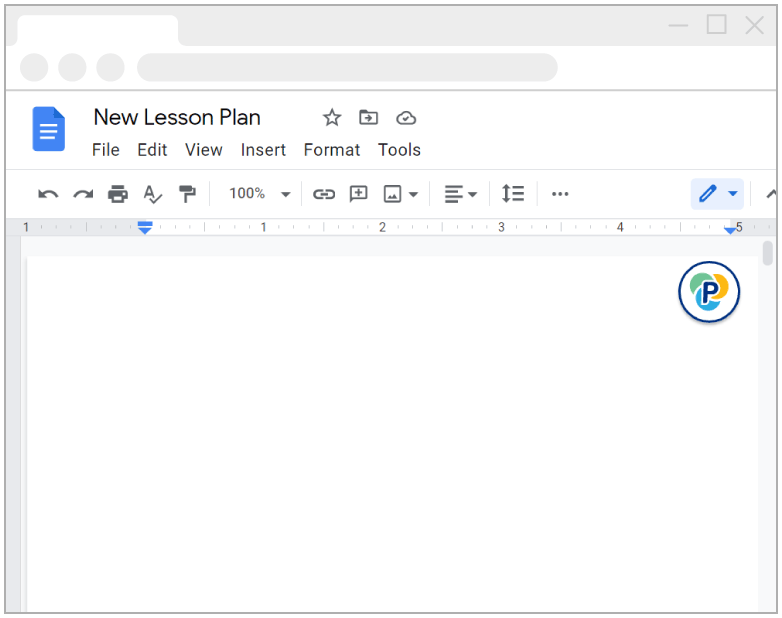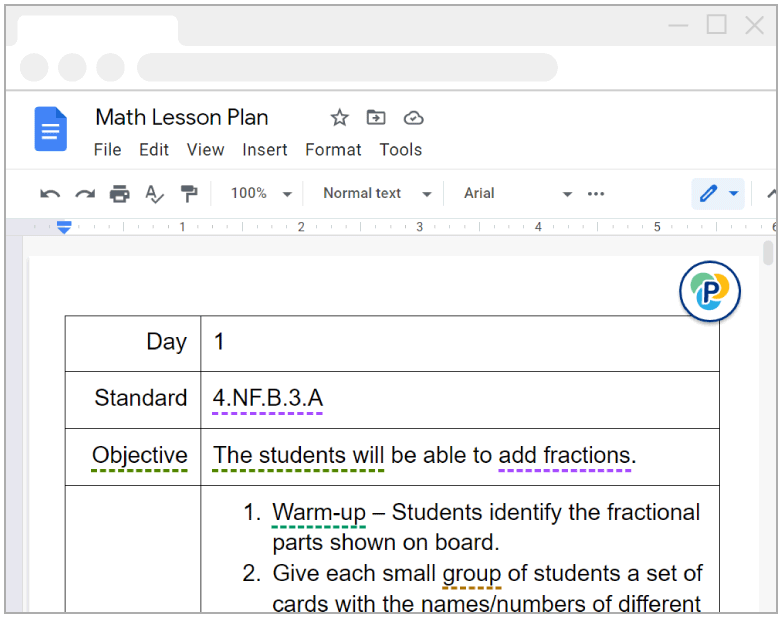
How the PlanWise® Tool Works
The strategies that the PlanWise® tool offers focus on six critical formative assessment practices:
-
Using Learning Goals with Your Students
-
Eliciting Student Understanding
-
Engaging Students in Peer Feedback
-
Engaging Students in Student Self-Assessment
-
Providing Formative Feedback to Students
-
Pre-Assessing Student Understanding
It doesn't matter whether teachers are working with students in person, virtually or in a hybrid model. All of the strategies offered by the PlanWise tool can be used with students in any instructional setting.
Let's Take A Closer Look
View this short video to learn more about the tool and how it works.
The Process
The teacher opens a blank Google Doc™ or an already-developed lesson plan in their Chrome™ browser.
Once the teacher begins, the PlanWise tool engages with the teacher's plan by underlining words that correspond to a formative assessment practice. The underlined words link to recommended practices and strategies specifically targeted to that teacher.
The teacher can select the underlined words to access additional information about the practice and specific strategies to help them implement it in their lessons.
When a teacher finds a strategy they'd like to try, they can copy and paste it right into their lesson plan in full text or summary format.
Teachers can also further customize their own experience within the PlanWise tool by deciding:
- which strategies they'd like to save in their personal library
- when they'd like to learn about and try new practices
- which strategies they'd like to hide
- which keywords they might want to ignore


Targeted Mathematics Misconception Questions
Mathematics teachers will also have access to targeted questions that help reveal common misconceptions. The PlanWise tool also underlines related math terms or associated standards found in the teacher's lesson plan. Selecting them takes the teacher to general information about common misconceptions, as well as to targeted questions that help uncover the students' understanding of the concept.
At first, the questions may look like those that teachers commonly find in manuals and online. But these targeted questions also provide explanations of misconceptions that may have led a student to select a specific answer option.
Teachers can copy and paste these questions right into their lesson plan or even into other documents that will be shared with students, like presentation slides and exit tickets.

Get Started
Professional learning focused on formative assessment practices delivered right into teachers' regular workflow at their pace, when they're ready and without having to search — that's the PlanWise tool.
Contact us to get started. We'll work with you on a subscription that's right for your school or district.